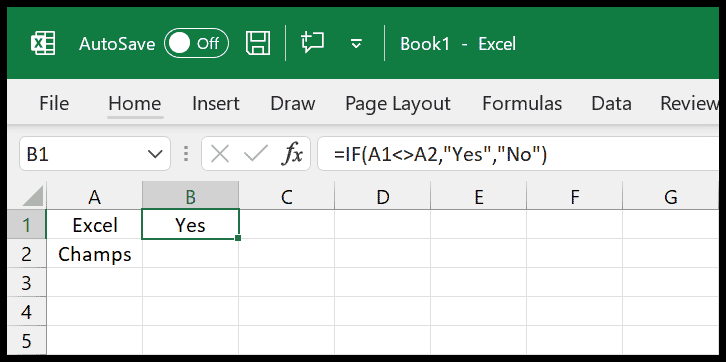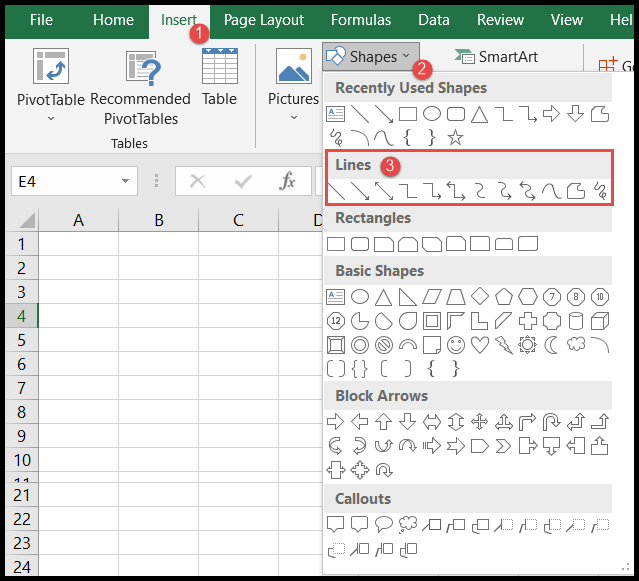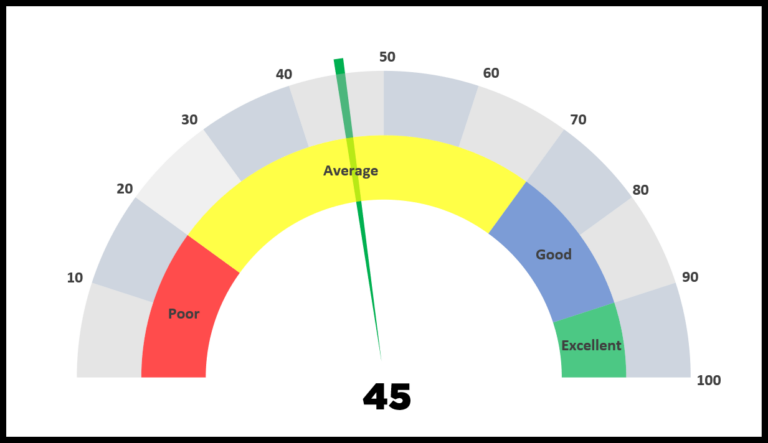In the landscape of software as a service (SaaS), understanding the sales funnel is like having a roadmap for turning curious browsers into committed customers. It’s not just a series of haphazard steps; it’s a strategic pathway that nurtures potential clients through their buying journey. At the top, there’s awareness—this is where customers first catch wind of a SaaS product, often through marketing efforts aimed at highlighting problems the software can solve.
As customers move down the funnel, they shift from simply knowing about the product to considering its value in their lives. This is a critical phase because customers weigh their options and start to see the benefits of making a conversion. Consideration turns into action in the conversion phase. Here, the magic happens: a prospect becomes a paying customer. But it doesn’t end after they punch in their credit card details. It’s essential for SaaS companies to focus on retention—keeping those customers around through excellent service and regular product enhancements, ensuring the sales funnel doesn’t leak valuable users.
Knowing the ins and outs of one’s SaaS sales funnel means they can optimize every stage to better guide customers along their journey. From the moment someone becomes aware of the service to the time they decide to stick around long-term, each step of the SaaS sales funnel matters. It’s about creating a seamless experience that makes both awareness and retention feel like natural parts of the customer’s progression, cementing the sales funnel as the backbone of any thriving SaaS business.
Understanding the SaaS Sales Funnel
In the dynamic landscape of SaaS, sales funnels play a pivotal role in guiding prospects through a structured journey, from awareness to retention.
Defining a SaaS Sales Funnel
A SaaS sales funnel is a marketing model that outlines the progressive steps a potential customer takes, leading up to a purchase and beyond. It’s more complex than traditional funnels due to recurring revenue models. This funnel typically consists of several key stages:
- Awareness Stage: They identify a company’s SaaS offering as a potential solution.
- Consideration Stage: Prospects evaluate the offering against competitors.
- Decision Stage: A decision is made to either purchase or not.
- Retention Stage: Efforts are made to ensure long-term customer value and satisfaction.
The Importance of a Structured Funnel
A well-structured funnel is crucial for SaaS businesses. It not only nurtures the lead through a well-defined path but also employs metrics and benchmarks to refine marketing and sales strategies. Specifically, for B2B SaaS sales funnels, the transformation from a potential lead to a customer requires distinct strategies at each funnel stage to address business clients’ unique needs.
Attracting Prospects
In the SaaS sales funnel, grabbing the attention of potential customers is crucial. It involves a mix of knowing who they’re targeting, standing out on social media and ads, offering valuable content, and ensuring they’re easily found online.
Identifying Your Target Audience
It’s pivotal for a SaaS company’s marketing team to pinpoint who they’re trying to reach. This means drilling down demographics, interests, and behaviors to define their ideal client persona. Once they’ve locked in their target audience, every subsequent marketing effort can be more tailored and effective.
Using Ads and Social Media
Ads on platforms like Google and LinkedIn can put a SaaS product in front of the right eyes. Social media amplifies this by providing a space for companies to engage with their audience, maybe even with some viral-worthy posts. They’re not just casting a wide net; they’re fishing where the fish are.
- Social Ads: Brief, impactful messages paired with compelling visuals.
- Retargeting Campaigns: Re-engage visitors who didn’t convert immediately.
Content Marketing Strategies
Content marketing is a big deal for SaaS companies. They create blogs, ebooks, and webinars that not only educate but also engage their audience. The content should address specific needs, positioning their product as the solution. This often involves lead magnets that provide value in exchange for contact information—think of a free tool or a downloadable guide.
| Type of Content | Purpose |
|---|---|
| Blog Posts | Educate and Solve Problems |
| Ebooks | Offer In-depth Insights |
| Webinars | Provide Live Demonstrations |
| Newsletters | Keep Prospects Informed |
SEO and Online Presence
They’re not overlooking SEO—search engine optimization makes sure a SaaS company’s online content gets found by search engines. By optimizing their website and content for relevant keywords, they boost awareness and ensure they’re front-and-center when potential clients start Googling for solutions.
- Website Optimization: Ensures quick loading times and mobile responsiveness.
- Keyword Strategy: Targets terms their audience is searching for.
Through identifying their target audience, launching targeted ad and social media campaigns, sharing valuable content, and improving their SEO tactics, SaaS companies effectively attract prospects and move them further down the sales funnel.
Conversion Strategies
In the landscape of SaaS, turning visitors into customers hinges on several pivotal strategies aimed at each step of the user experience. Let’s explore how to tweak specific touchpoints and drive stronger conversion rates.
Effective Landing Pages
A landing page acts as the storefront for a SaaS product; it’s pivotal in making a strong first impression. Crafting landing pages with clear, value-oriented messaging and striking calls to action (CTAs) is key. They must convey the product’s benefits concisely and entice visitors to engage further. Utilization of contrasting button colors and concise text can significantly increase the likelihood of a visitor taking the next step.
Capturing Qualified Leads
A qualified lead is a potential customer who has shown interest and fits the target demographic. To capture such leads, companies use gated content, webinars, or sign-up forms. High-quality content, such as whitepapers or case studies, can be offered in exchange for contact details. It’s crucial that these forms are not overly long; asking for too much information can deter potential leads.
Utilizing Free Trials and Demos
Offering free trials and product demos can dramatically boost conversion rates for a SaaS business. These tactics allow potential customers to experience the product’s value firsthand, reducing hesitance towards commitment. During the trial or demo, tailored communication can help guide the user towards conversion, emphasizing the product’s ability to solve the user’s specific problems.
Conversion Rate Optimization
Conversion rate optimization (CRO) involves analyzing user behavior and tweaking elements of the sales funnel for improved performance. A/B testing various aspects of the sales process, like email marketing campaigns or landing page layouts, can reveal what resonates best with the audience. Monitoring and adjusting these elements frequently ensures that the conversion funnel is as efficient as possible.
Nurturing Through the Funnel
Nurturing leads through the SaaS sales funnel isn’t just about making them aware of a product; it’s about building relationships and guiding them towards a purchase. The key elements include targeted tactics, leveraging technology, and offering valuable interactions.
Lead Nurturing Tactics
Lead nurturing tactics involve a strategic engagement approach to move potential clients through different stages of the sales funnel. Companies often use educational content, targeted offers, and personalized communication to maintain interest. They may segment their audience to tailor the approach such as:
- Industry-specific content for relevance
- Case studies to provide practical examples
- Direct engagement through social media interaction
Marketing Automation Tools
Marketing automation tools streamline the lead nurturing process. They allow businesses to:
- Segment leads based on behavior and engagement
- Score leads to prioritize sales efforts
- Automate tasks like email sends and social media posts
Some popular tools include platforms like HubSpot, Marketo, and Salesforce Pardot.
Engaging With Webinars and Events
Webinars and online events are efficient ways to connect with many leads at once, offering them valuable insights and demonstrating expertise. They provide an interactive environment for:
- Live Q&A’s, fostering a deeper connection
- Product demos, showcasing a SaaS solution in action
Email Drip Campaigns
An email drip campaign is a series of emails sent over time, which relate to where the lead is in the funnel. Here’s what it might include:
- Initial email: to thank them for their interest
- Educational content: to build trust and authority
- Testimonials or reviews: to offer social proof
- Exclusive offers or trials: to encourage conversions
Closing the Deal
Closing the deal is a critical point in the sales funnel, where pricing strategies, negotiation techniques, and a streamlined checkout process play pivotal roles in converting a prospect to a customer.
Pricing Structure and Strategies
One should always ensure that the pricing structure is clear and aligns with the value proposition of the SaaS product. Common strategies include tiered pricing, which allows customers to choose a level that suits their needs and budget. It’s crucial to display these options transparently on the checkout page to prevent any last-minute objections that could affect the conversion ratio.
Effective Negotiation Techniques
During negotiations, it’s important to address objections head-on and articulate the flexibility of the service to meet the client’s needs. Sales reps should be prepared to offer data-driven results and testimonies that solidify the software’s ROI. Efficient negotiation can significantly increase revenue by ensuring that both parties feel they are achieving a win-win outcome.
The Checkout Process
The checkout process is the final step in the sales funnel and should be as seamless as possible to maintain the conversion ratio. A straightforward and secure checkout page, with visible trust signals and multiple payment options, ensures that the customer can finalize the deal with confidence and ease. Keeping this process simple reduces the risk of cart abandonment and is key to closing the deal successfully.
Post-Sale Engagement and Retention
After a sale, the real work begins for SaaS companies. They need to keep customers engaged and retained to ensure a healthy flow of monthly recurring revenue. This part of the sales funnel is critical for maintaining long-term relationships and encouraging customer loyalty.
The Onboarding Process
A customer’s first experience post-purchase is the onboarding process. It ensures users understand how to get the most out of their new software. Companies must make this process as smooth and informative as possible by providing clear instructions, tutorial videos, and access to customer support. This initial experience significantly impacts the likelihood of a customer’s continued subscription.
Fostering Loyalty and Upselling
Once customers are comfortable with the software, it’s time to foster loyalty and explore upselling opportunities. By tracking user satisfaction and engaging through personalized communication, companies can identify the right moment to introduce additional features or premium packages. Loyal customers are often more receptive to upselling, which can effectively increase the customer’s value over time.
Analyzing Customer Behavior
Understanding customer interactions with the product is key. By analyzing customer behavior, companies can gather insights into what features are most used, where customers encounter difficulties, and what drives their continued engagement. This data can guide product development and help tailor marketing efforts to customer needs.
Managing Churn and Retention Metrics
Churn rate is a critical metric for any SaaS company. It represents the percentage of customers who stop using the service over a certain period. Managing churn and retention involves identifying at-risk customers and deploying strategies to prevent them from leaving. Additionally, by analyzing retention metrics, companies can understand better what keeps customers staying and what might cause them to leave.
Analyzing and Optimizing the SaaS Sales Funnel
Optimizing a SaaS sales funnel is crucial for converting prospects into loyal customers. It’s about understanding which metrics indicate success and where there’s room for improvement.
KPIs and Metrics to Watch
The heart of a SaaS sales funnel’s analysis lies in the key performance indicators (KPIs) and metrics. These numeric values provide insight into the health and efficiency of the sales process. Essential metrics include:
- Customer Acquisition Cost (CAC): How much it costs to acquire a new customer.
- Customer Lifetime Value (CLV): The total revenue a business can expect from a single customer account.
- Conversion rates: Percentage of leads that become customers.
- Churn rate: The rate at which customers stop doing business with the SaaS company.
By monitoring these figures, companies in the SaaS market can gauge the funnel’s performance and identify stages that need refinement.
Learning From Customer Feedback
Customer feedback, including testimonials and reviews, is invaluable. They shed light on the user experience and highlight what’s working or what’s not. SaaS companies can employ various methods to gather this feedback, such as:
- Customer surveys
- User testing sessions
- In-app feedback tools
This direct input helps SaaS providers understand pain points within the funnel and tailor their strategies to meet customer needs more effectively.
A/B Testing and Continuous Improvement
A/B testing is a methodical approach to improving the SaaS sales funnel. It involves:
- Creating Variations: Developing two versions of a funnel element, such as a landing page.
- Testing: Showing these versions to different segments of the audience.
- Analyzing Results: Determining which version performs better in terms of conversions.
Continuous improvement through A/B testing ensures that the SaaS sales funnel remains effective in a dynamic B2B SaaS market. It’s a cycle of testing, learning, and refining that helps SaaS businesses stay competitive and grow over time.
Frequently Asked Questions
Navigating the SaaS sales funnel can be complex, but understanding its structure and the strategies that make it work is key to turning leads into customers.
How can I create an effective SaaS sales funnel template?
Creating a SaaS sales funnel template involves identifying the customers’ journey from discovery to purchase. They can start by mapping out each stage – awareness, interest, decision, and action – ensuring the content and interactions are relevant and engaging for the target audience at each point.
What does a typical SaaS sales funnel look like in a B2B context?
In a B2B context, a typical SaaS sales funnel starts with awareness through marketing efforts, followed by interest wherein leads engage with content or demos. The decision stage involves negotiations or discussions, and finally, action is taken when a purchase is made. Post-sale, the funnel often includes retention and upselling strategies.
Can you break down the various stages of a SaaS sales funnel?
The SaaS sales funnel typically includes several key stages: Top of Funnel (TOFU) focuses on awareness, Middle of Funnel (MOFU) nurtures interest and consideration, and Bottom of Funnel (BOFU) drives decisions and conversions. Each stage requires tailored content and tactics to effectively move prospects through the funnel.
Which metrics are crucial for monitoring the performance of a SaaS sales funnel?
Key metrics for a SaaS sales funnel include customer acquisition cost (CAC), customer lifetime value (CLTV), churn rate, conversion rates for each funnel stage, and the overall velocity at which leads progress through the funnel.
What strategies work best for moving prospects through a SaaS sales funnel?
Successful strategies for moving prospects through a SaaS sales funnel include personalizing communication, providing value through educational content, engaging with leads via multiple channels, and offering free trials or demonstrations of the product.
How does the marketing funnel integrate with a SaaS product’s user journey?
The marketing funnel and a SaaS product’s user journey are intertwined, with marketing efforts aimed at guiding prospects from initial awareness through consideration and towards making a purchase. Post-purchase, the focus shifts to onboarding, user engagement, and retention.



